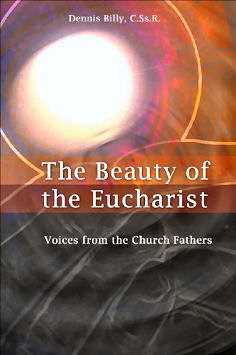
|
Posted July 6, 2009
Book: The Eucharistic Prayer at Sunday Mass Author: Richard McCarron Liturgical Training Publication. Archdioceses of Chicago. 1997. Pp. 147 An Excerpt from the Jacket:
This book is a bridge. With it, cross over! It is companion for the parish’s journey to a Sunday when even “center and summit” will not seem strong enough to describe how people are engaged in their eucharistic prayer! Like The Communion Rite at Sunday Mass, this book deals with real parish life on Sunday morning: How can these bones live? They can live when parish leadership discovers here the wonderful tradition of eucharistic praying that is our biblical and our church heritage. On these pages the eucharistic prayer becomes the source of preaching and catechesis and the source of formation for presiders and assembly. An Excerpt from the Book: Who Prays the Eucharistic Prayer? The eucharistic prayer is the prayer of the faithful. As presider in the gathering, the priest voices that prayer, but does so as the tongue of the Body: It must be [and be experienced as] the prayer of the whole Body of Christ coming before the Father with praise and thanksgiving. The presider’s manner must not suggest any withdrawal from the assembly at this point but rather, as leader in prayer, an intensified solidarity with them in Christ. Introductory dialogue, tone of voice, facial expression, posture, gestures, manner of eye contact — all these may be used effectively to maintain the unity of the assembly in a unified prayer. The attitude of presider and people and the style with which the acclamations are done should indicate clearly that these are parts of the prayer, not interruptions, interventions, or decoration. Congregational attention and involvement must be maintained and extended by developing the dialogic character of prayer, but participation includes the visual and kinesthetic senses as well as verbal and auditory forms. What is the thrust of the praying? The eucharistic outlook is one of corporate gratitude publicly expressed on humanity’s behalf, not petition or propitiation. When people come to recognize that they are redeemed, they have not thereby lost the sense of sin but rather are grateful because they realize the situation they would have been in were it not for Christ. Eucharistic prayer [in the wide sense] is thus the central movement of all Christian prayer. Eucharistic prayer [in the more specific sense] is essentially a heartfelt public acknowledgement of gratitude and thanksgiving to God for what has happened to and for us in Christ, for what is happening and for what will happen. But what does it mean for us to praise God publicly? There is clearly a difference between public and private praise. Both may, of course, be merely matters of politeness or flattery or even insincerity, but generally to praise someone publicly is to let the world know where one stands. Particularly when the object of one’s praise is not universally acknowledged or when such praise will lead to specific expectations of the one praising or even impose certain obligations and responsibilities, then public praise becomes a public commitment of one’s person. The eucharistic prayer, if it is meant, is consequently a responsible confession of faith — indeed, it is, after baptism, the central Christian profession of faith. In what context do we praise God? Our praise of God in the eucharistic prayer isour public acknowledgment of gratitude for all that is ours in Christ and our commitment to the eucharistic way of life. This way of life is necessarily communal and corporate and so requires the Christian community itself to reach beyond its boundaries to find its purpose for existence. The context within which the praise of God is publicly proclaimed shows this. The eucharistic prayer is the Christian community’s table prayer. The gesture of the shared meal itself makes a statement and issues a challenge, but the words of the prayer which precedes it and states its nature and purpose make it unmistakable: All the world is gift to us and in sharing it with one another we give thanks to God. Table of Contents: 1.Can these bones live? 2. The roots and evolution of eucharistic praying 3. The recovery of the eucharistic prayer 4. The elements of the eucharistic prayer: word and ritual 5. The assembly’s role 6. The presider’s role 7. The preparation of the altar and gifts 8. How do we get there? 9. What might the future hold? |
|
